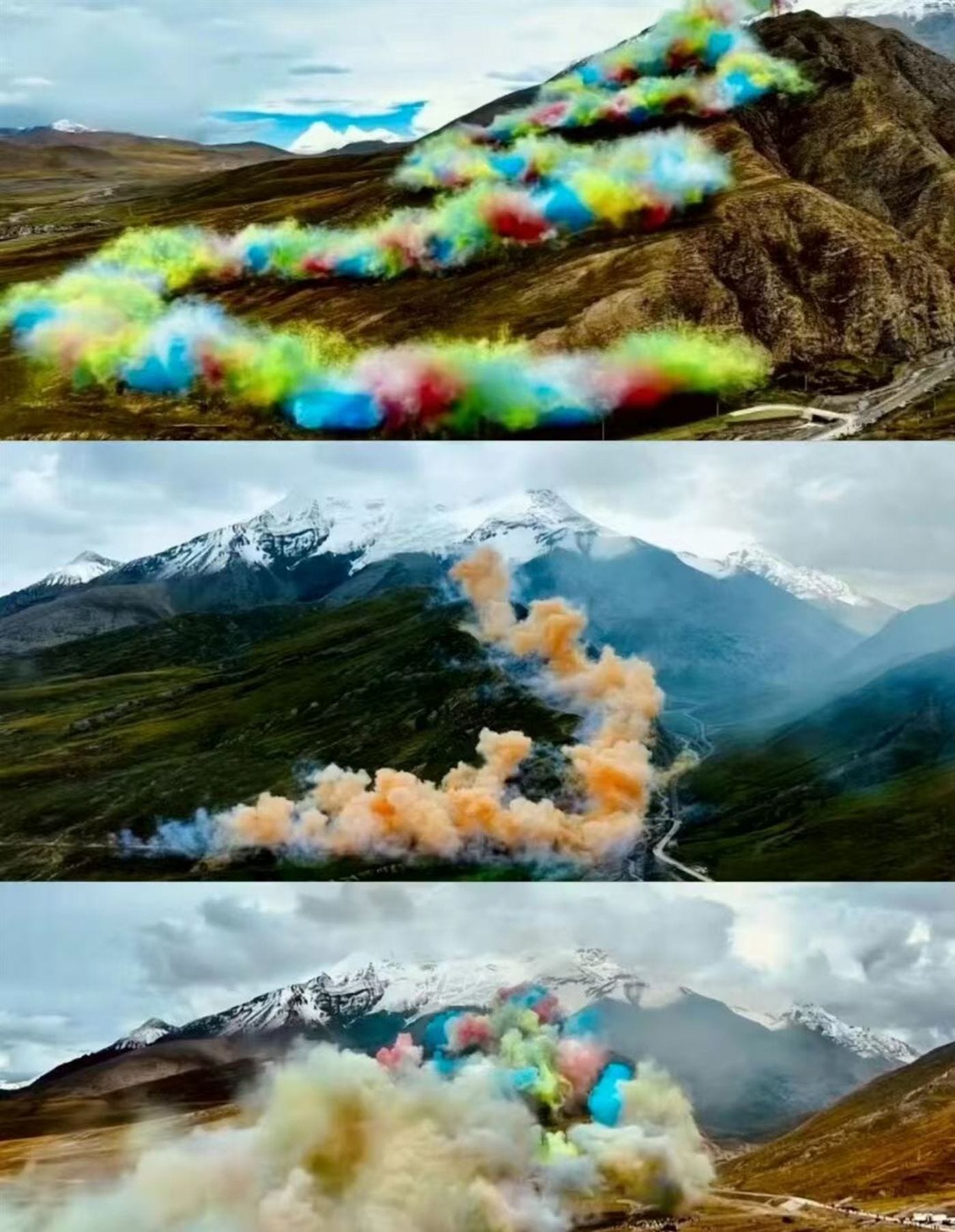China’s middle class forces Arc’teryx to face ESG reality
A himalayan fireworks scandal reveals how China’s middle class is reshaping brand loyalty and turning ESG from a slogan into a purchasing standard.
China's middle-class consumers punished a brand for ESG hypocrisy within 72 hours of a high-profile Himalayan fireworks show.
Inconsistent Chinese vs. English apologies fueled backlash, accelerating reputational damage and cross-border scrutiny
Scarcity-driven demand shifted immediately into bargain hunting as consumers anticipated discounts and inventory clearance
Outdoor apparel grew 53% in 2024 and 26% in H1 2025, but consumers now demand that "premium equals responsible"
A new force is shaping brand fortunes in China: the nation’s rapidly maturing middle class, now empowered and willing to enforce brand promises. Within 72 hours of a high-profile fireworks display in the Himalayas, outdoor apparel giant Arc'teryx learned this lesson firsthand, as consumers rapidly sanctioned what they perceived as ESG hypocrisy.
On September 19, 2025, Arc'teryx and artist Cai Guoqiang stage "Ascending Dragon" on the Tibetan plateau.
Within 48–72 hours, official commentary, an investigation, and dueling apologies ignite a case study in consumer power.
Local sustainability concerns meet national digital scrutiny. The response spans environmental experts, outdoor enthusiasts, and mainstream media, while the Shigatse government opens a site probe. In a fragile high-altitude ecosystem, fireworks read as violation, not celebration.
China's Middle Class Moves from Aspirants to Enforcers
Arc'teryx's growth rides China's urban middle class, which prizes performance, status, and environmental ideals. That cohort now enforces brand claims, not just admires them, using social platforms and official commentary to police contradictions.
Many consumers describe anger not at art per se, but at dissonance.
"Outdoor spirit" should honor fragile ecosystems; fireworks at ~5,000–5,500 meters appear to some as the opposite.
Reactions are mixed. Core buyers do not uniformly defect; some keep wearing existing jackets. Yet intentions shift toward value capture, not prestige signaling, with buyers chasing outlet or discounted stock.
ESG Becomes a Purchase Filter, Not a Press Release
Some Chinese media frame ESG as a consumer filter rather than an investor checklist. When a brand markets environmental reverence, buyers expect congruent behavior in vulnerable geographies, not performative sustainability.
Past controversies, PFAS chemicals in fabrics, quality complaints, primed audiences to test claims harder. The fireworks incident compounds perceived gaps between messaging and materials disclosure, intensifying distrust.
The outdoor apparel e-commerce segment grew 53% in 2024, then 26% in H1 2025, eclipsing luxury's slowdown. Premium outdoor inherits luxury's symbolism while adding functional scrutiny.
Apology Asymmetry Accelerates Reputational Damage
Within three days, Arc'teryx posts apologies with different tones in Chinese and English. Screenshots spread widely, and critics accuse the brand of "double standards".
In a hyper-connected media sphere, bilingual gaps read as intent, not oversight. Commentary shifts from art and permits to integrity and governance.
Crisis playbooks must ship synchronized messaging across markets within hours. Fragmented narratives cannot survive comparison.
Prestige Dynamics Flip from Scarcity Hype to Clearance Calculus
Spot checks show steady store traffic but weaker conversions. Some fans welcome "lower difficulty" in acquiring limited items. Merchants report higher acceptance of outlet and past-season stock as negativity rises.
This bifurcates demand. Core users persist; marginal buyers delay or downshift. Scarcity-driven enthusiasm quickly pivots to bargain hunting, altering margins.
Competitors Sense Openings as Symbolism Dilutes
High-end rivals flood China: Mammut, X-Bionic, Norrona, plus domestic players with ¥10,000-class lines.
Arc'teryx's earlier Tibet-inspired collections sold out at ¥5,400 by lottery. The 2025 spectacle disrupts that authenticity chain.
As meaning thins, switching costs fall. Buyers shift to substitutes carrying equal performance and fewer reputational risks. Customer acquisition costs will rise into 2026.
Robust Growth Masks New Vulnerabilities
Amer Sports reports Q2 2025 revenue of $1.236 billion, with Greater China up 42.4% to $856 million. Outdoor technical apparel grows 23% to $509 million. Same-store growth slows to 15%, down from 26% a year earlier.
Analysts note visible "de-mythologizing". Demand fragments across substitutes and value tiers, making growth increasingly vulnerable to reputational shocks.
Permits Are Not Permission
Brands cite approvals; consumers read values. Compliance as license is insufficient, one article states, as officials open an ecological review.
While brands diligently secure local permits, Chinese consumers increasingly evaluate actions through a lens of cultural and ecological values that exceed legal minimums.
Outdoor communities emphasize "Leave No Trace". The phrase "zero-pollution fireworks" becomes shorthand for credibility gaps.
Boards must weigh cultural and ecological expectations alongside legal filings. Consumers judge the composite.
Crisis Speed and Tone Set Recovery Odds
One report criticizes a three-day lag to apology, calling it "arrogant". Earlier contrition could have contained damage.
Buyers demand humility tied to action: third-party reviews, material transparency, remediation steps.
"Coordinate with environmental agencies and invite independent assessment", Arc'teryx pledges; follow-through will define recovery.
What Consumers Really Buy: Identity Underwritten by Integrity
Limited Tibet-inspired capsules sold rapidly because they signaled respect.
In 2025, spectacle substitutes meaning. Consumers perceive the swap and withdraw symbolic credit.
Identity retailing intensifies this effect. Middle-class buyers sanction brands that fail ESG coherence, raising the cost of future engagement.
Category Tailwinds Meet Reputational Headwinds
Outdoor remains China's growth bright spot while luxury stalls.
Yet eco-discipline norms—like carrying fruit peels down mountains—make fireworks symbolically expensive. The stronger the tailwinds, the higher the authenticity bar.
Category winners in 2026 will be those embedding verifiable low-impact practices, authentic partnerships, and consistent bilingual governance.
How Pricing Power Is Defended in China Now
Premium pricing depends not only on scarcity but on evidence.
Brands must pair limited drops with transparent ESG progress. Published roadmaps on PFAS and independent audits will help restore willingness to pay ¥2,000–¥5,400 premiums.
Otherwise, promotions and discounting dominate, compressing margins. Competitors will capture narrative slack.
What This Teaches Global Management Teams
The scandal compresses four lessons:
Compliance ≠ permission.
Speed matters—three days feels indifferent.
Bilingual asymmetry is a liability.
ESG must drive product and activations, not just reports
China's middle class behaves as sophisticated investors. They rebalance across brands when expected returns on identity, integrity, and performance shift.
The reward for alignment is durable pricing power. The cost of misalignment, measured online and at the register, is immediate, compounding, and avoidable.



